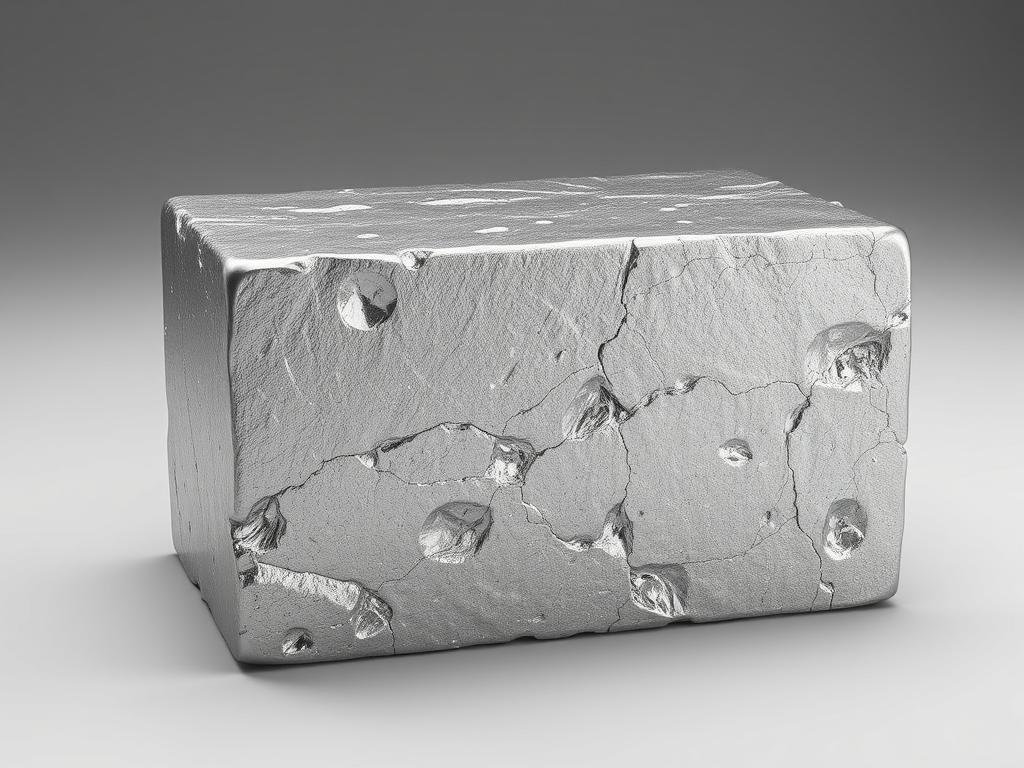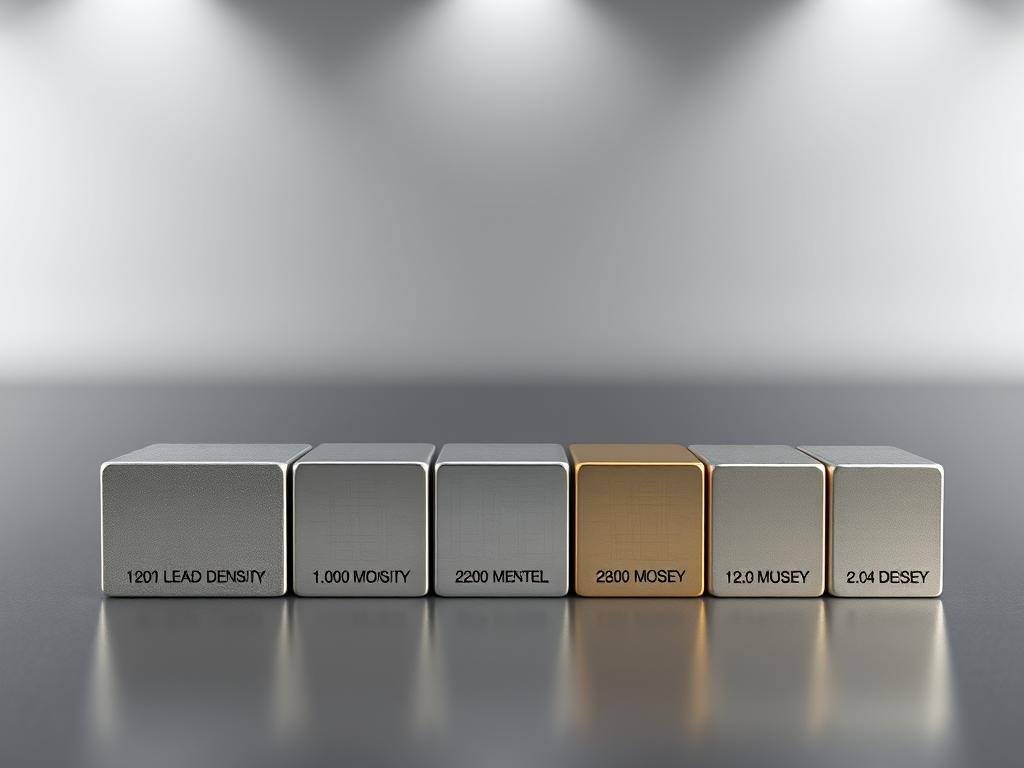Lead is a heavy metal with a remarkably high density that significantly impacts its applications and handling. With a density of approximately 11.34 grams per cubic centimeter at room temperature, lead is one of the densest common metals available.
The atomic structure of lead contributes to its high density, with a large atomic mass and efficient atomic packing arrangement creating a material with substantial weight per unit volume. Understanding lead’s density is crucial for engineers, scientists, and manufacturers who utilize this property in various applications.
From radiation shielding to counterweights, lead’s unique density properties make it invaluable in specific industrial and scientific applications. This comprehensive guide will explore the science behind lead’s density and its practical applications.
The Science Behind Lead’s High Density
Understanding the science behind lead’s high density requires examining its atomic composition. Lead is regarded as having high density due to its atomic structure and relatively higher atomic mass.
What Is the Density of Lead?
The density of lead is a critical property that contributes to its versatility in various applications. With an atomic number of 82 and an atomic weight of 207.2, lead has a considerable mass per unit space. This significant mass is a primary factor in its high density.
- Lead’s atomic number and atomic weight contribute significantly to its high density.
- The face-centered cubic (FCC) lattice arrangement of lead atoms minimizes empty space, further contributing to its density.
- The efficient packing of lead atoms in the FCC lattice means that many atoms can fit in a given volume.
Atomic Structure and Its Role in Lead’s Weight
The atomic structure of lead plays a crucial role in its weight. The dense nucleus of lead contains protons and neutrons, contributing to its mass. Lead crystallizes in a face-centered cubic (FCC) lattice, which is one of the most efficient atomic packing arrangements.
The combination of lead’s heavy atomic mass and efficient structural arrangement creates a material with significantly more mass in a given volume than most other commonly used metals. The electrons in lead’s atomic structure influence the bonding between atoms, affecting how tightly they can be packed together and consequently impacting the overall density of the material.
Understanding the Density of Lead in Detail
Understanding the density of lead in detail is essential for appreciating its value in different applications. The density of lead, approximately 11.35 g/cm³, is a critical property that influences its use in various industries.
How Lead Density Is Measured
Measuring the density of lead involves determining its mass per unit volume. Various methods can be employed to measure lead density, including hydrostatic weighing and pycnometer methods. Hydrostatic weighing involves measuring the weight of a lead sample in air and then in water, using the difference to calculate density. The pycnometer method involves measuring the volume of a known mass of lead using a pycnometer, a specialized flask.
Relative Density and Specific Gravity of Lead
The relative density, or specific gravity, of lead is the ratio of its density to that of water. Given that the density of water is approximately 1 g/cm³ at 4°C, and the density of lead is about 11.35 g/cm³, the relative density of lead is calculated as 11.35. This means lead is 11.35 times denser than water.
| Material | Density (g/cm³) | Relative Density |
|---|---|---|
| Water | 1 | 1 |
| Lead | 11.35 | 11.35 |
The relative density of lead is a dimensionless value that provides a quick comparison of its weight to other materials, using water as a reference. This property is particularly useful in applications where buoyancy is a consideration.

Factors That Influence Lead’s Density
Several factors can influence the density of lead, making it a versatile material for various applications. Understanding these factors is crucial for optimizing lead’s use in different industries.
Temperature Effects on Lead Density
The density of lead is affected by temperature changes. As temperature increases, lead expands, resulting in a decrease in its density. This thermal expansion is a critical consideration in applications where lead is exposed to varying temperatures.
Impact of Purity and Impurities
The purity of lead also plays a significant role in determining its density. Impurities can either increase or decrease the density of lead, depending on the nature of the impurities. For instance, adding impurities with a higher density than lead can increase the overall density of the material.
Pressure and Its Minimal Effect
Pressure has a minimal effect on the density of lead under normal conditions. However, at extremely high pressures, lead can be compressed, resulting in a slight increase in its density. The bulk modulus of lead, which measures its compressibility, is approximately 46 GPa.
| Factor | Effect on Lead Density | Typical Conditions |
|---|---|---|
| Temperature Increase | Decrease | High-temperature environments |
| Impurities | Varies | Depending on the impurity |
| Pressure Increase | Minimal Increase | Extremely high-pressure conditions |
Comparing Lead’s Density to Other Metals
When comparing the density of lead to other metals, it becomes evident that lead has a unique position due to its high density. This characteristic makes lead particularly useful in applications where weight is a critical factor.
Lead vs. Common Metals: Density Comparison
Lead’s density of approximately 11.34 g/cm³ is significantly higher than many common metals. For instance, aluminum has a density of about 2.7 g/cm³, and copper’s density is around 8.96 g/cm³. This comparison highlights lead’s exceptional density, making it suitable for specific industrial applications where high mass is required in a relatively small volume.

How Alloying Affects Lead’s Density
Alloying lead with other metals can alter its density. For example, adding antimony to lead, as in lead-antimony alloys used in battery grids, reduces the overall density because antimony has a lower atomic mass than lead. The extent of this reduction depends on the proportion of antimony added. Generally, the rule of mixtures applies, allowing engineers to predict and control the density of lead alloys by adjusting the proportions of the constituent metals.
Some key points to consider when alloying lead include:
- Alloying elements like antimony, tin, and calcium typically have lower densities than pure lead, reducing the overall density of the alloy.
- The density of lead-antimony alloys decreases with increasing antimony content; for instance, a 4% antimony content reduces the density to approximately 11.0 g/cm³.
- Beyond density modification, alloying can enhance other properties such as hardness and corrosion resistance, making the material more suitable for specific industrial applications.
Practical Applications Due to Lead’s High Density
Lead’s high density is a primary reason for its application in numerous fields, including radiation shielding and counterweights. The unique properties of lead make it an ideal material for various industrial uses.
Radiation Shielding Applications
One of the critical applications of lead is in radiation shielding. Due to its high density, lead is effective at absorbing radiation, making it a crucial material in medical facilities, nuclear power plants, and other environments where radiation protection is necessary. The density of lead allows for the creation of compact shielding solutions, which is particularly valuable in situations where space is limited.
Soundproofing and Acoustic Properties
Lead is also utilized for soundproofing due to its density and ability to dampen sound. Lead sheets are often used in soundproofing applications to reduce noise transmission between rooms or from the outside environment. The high density of lead helps to effectively absorb sound energy, contributing to a quieter environment.
Counterweights, Ballasts, and Other Industrial Uses
Lead’s density makes it ideal for use in counterweights and ballasts, providing significant mass in a compact volume. This property is utilized in applications such as:
- Elevator counterweights, where lead’s high density provides the necessary weight in a compact form.
- Ship ballasts and submarine trim systems, where stability and control are crucial.
- Automotive wheel balancing and specialized vehicle components, where weight distribution is critical for performance and safety.
The combination of high density, corrosion resistance, and ease of casting into complex shapes makes lead a preferred material in many industrial weight applications.
Conclusion: The Future of Lead in Modern Applications
The unique properties of lead ensure its continued relevance in various industries. Lead’s high density and other physical properties make it invaluable in niche applications, particularly in radiation shielding and counterweights.
Modern research focuses on developing lead composites and encapsulation technologies to minimize environmental and health risks. As engineering requirements become more specialized, lead’s unique characteristics will continue to be valuable.
